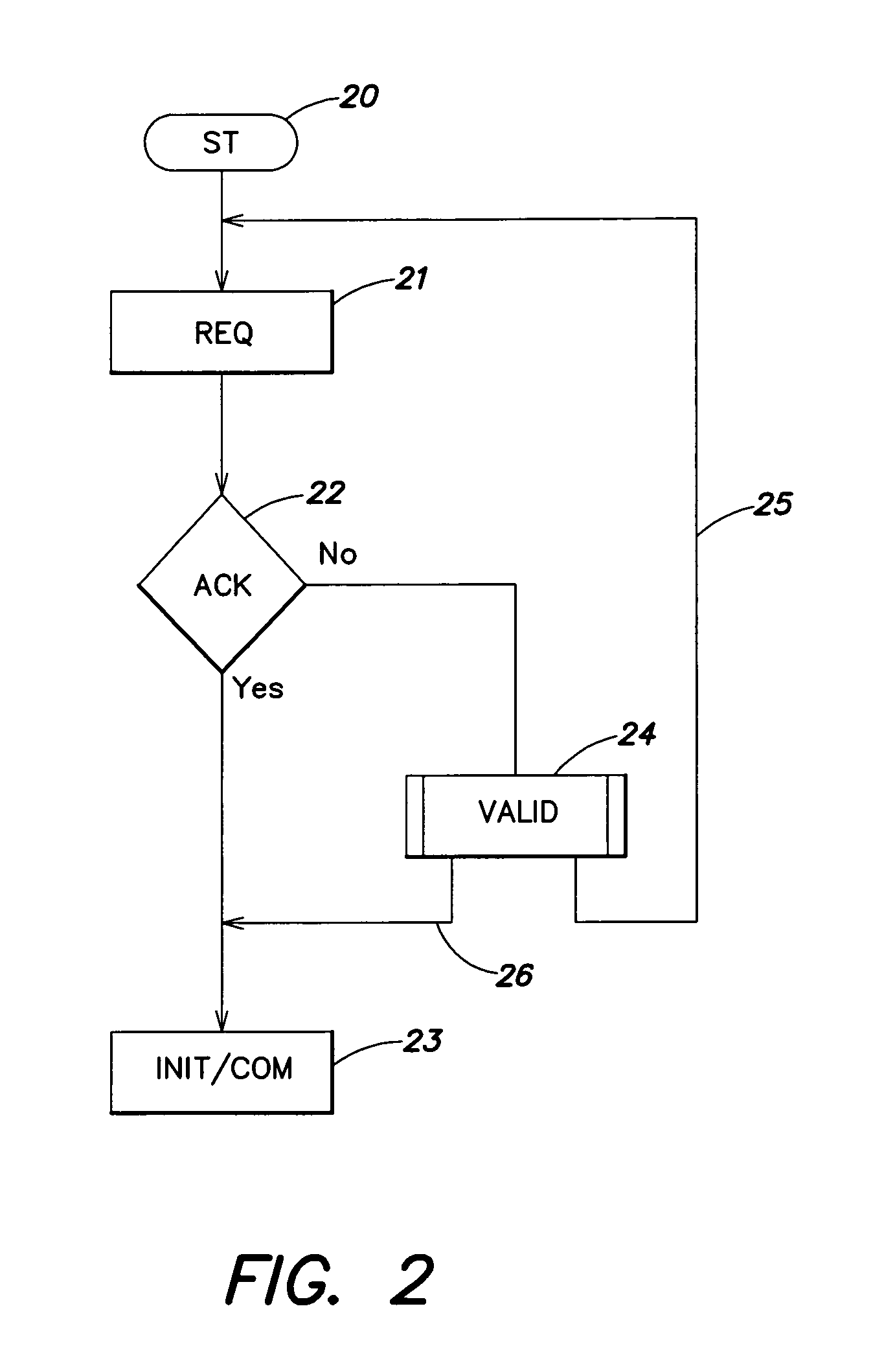Validation of the presence of an electromagnetic transponder in the field of an amplitude demodulation reader
a technology of amplitude demodulation and validation of the presence of an electromagnetic transponder, which is applied in the direction of transmission systems, visible signalling systems, indirect connection of subscribers, etc., can solve the problems of terminal undetected, terminal demodulator cannot detect the presence of data modulation, and transponder remote supplied by a terminal
- Summary
- Abstract
- Description
- Claims
- Application Information
AI Technical Summary
Benefits of technology
Problems solved by technology
Method used
Image
Examples
Embodiment Construction
[0039]The same elements have been referred to with the same references in the different drawings. For clarity, only those elements of a terminal and of a transponder and only those steps of the information exchange process which are necessary to the understanding of the present invention have been illustrated in the drawings and will be described hereafter. In particular, the details constitutive of the modulators and demodulators have not been detailed and are within the abilities of those skilled in the art based on the functional indications given hereafter. Further, the present invention will be discussed in relation with transponders using a so-called “resistive” back-modulation to vary the load that they form on the terminal's oscillating circuit (the capacitances of the oscillating circuits of the transponders being fixed), but it should be noted that the present invention more generally applies to any type of back-modulation, for example to a so-called “capacitive” back-modu...
PUM
 Login to View More
Login to View More Abstract
Description
Claims
Application Information
 Login to View More
Login to View More - R&D
- Intellectual Property
- Life Sciences
- Materials
- Tech Scout
- Unparalleled Data Quality
- Higher Quality Content
- 60% Fewer Hallucinations
Browse by: Latest US Patents, China's latest patents, Technical Efficacy Thesaurus, Application Domain, Technology Topic, Popular Technical Reports.
© 2025 PatSnap. All rights reserved.Legal|Privacy policy|Modern Slavery Act Transparency Statement|Sitemap|About US| Contact US: help@patsnap.com



